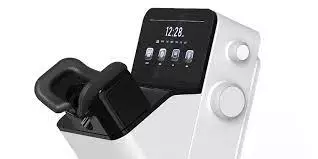- Home
- Medical news & Guidelines
- Anesthesiology
- Cardiology and CTVS
- Critical Care
- Dentistry
- Dermatology
- Diabetes and Endocrinology
- ENT
- Gastroenterology
- Medicine
- Nephrology
- Neurology
- Obstretics-Gynaecology
- Oncology
- Ophthalmology
- Orthopaedics
- Pediatrics-Neonatology
- Psychiatry
- Pulmonology
- Radiology
- Surgery
- Urology
- Laboratory Medicine
- Diet
- Nursing
- Paramedical
- Physiotherapy
- Health news
- Fact Check
- Bone Health Fact Check
- Brain Health Fact Check
- Cancer Related Fact Check
- Child Care Fact Check
- Dental and oral health fact check
- Diabetes and metabolic health fact check
- Diet and Nutrition Fact Check
- Eye and ENT Care Fact Check
- Fitness fact check
- Gut health fact check
- Heart health fact check
- Kidney health fact check
- Medical education fact check
- Men's health fact check
- Respiratory fact check
- Skin and hair care fact check
- Vaccine and Immunization fact check
- Women's health fact check
- AYUSH
- State News
- Andaman and Nicobar Islands
- Andhra Pradesh
- Arunachal Pradesh
- Assam
- Bihar
- Chandigarh
- Chattisgarh
- Dadra and Nagar Haveli
- Daman and Diu
- Delhi
- Goa
- Gujarat
- Haryana
- Himachal Pradesh
- Jammu & Kashmir
- Jharkhand
- Karnataka
- Kerala
- Ladakh
- Lakshadweep
- Madhya Pradesh
- Maharashtra
- Manipur
- Meghalaya
- Mizoram
- Nagaland
- Odisha
- Puducherry
- Punjab
- Rajasthan
- Sikkim
- Tamil Nadu
- Telangana
- Tripura
- Uttar Pradesh
- Uttrakhand
- West Bengal
- Medical Education
- Industry
Home OCT device useful tool for self-monitoring of neovascular age-related macular degeneration: Study

Home OCT device useful tool for self-monitoring of neovascular age-related macular degeneration suggests a study published in the Ophthalmology Retina.
A study was done to assess the feasibility of daily Home OCT imaging among patients with neovascular age-related macular degeneration (nAMD). Participants meeting the ocular eligibility criteria were considered for enrollment; those who provided consent received a Notal Vision Home OCT device. Participants were instructed to scan both eyes daily. Retina specialists managed treatment according to their standard practice, without access to the Home OCT data. The presence of fluid detected by a reading center (RC) from in-office OCT scans was compared with fluid volumes measured by the Notal OCT Analyzer (NOA) on Home OCT images.Proportion of participants meeting ocular eligibility criteria who participated in daily scanning, frequency and duration of scanning, proportion of scans eligible for fluid quantification, participant experience with the device, agreement between the RC and NOA fluid determinations, and characteristics of fluid dynamics.
Results: Among 40 participants meeting ocular eligibility criteria, 14 (35%) initiated self-scanning. Planned travel (n = 7, 17.5%) and patient-reported inadequate cell reception for the upload of images (n = 5, 12.5%) were the most frequent reasons for not participating. Considering scans of the study eye only, the mean (standard deviation) was 6.3 (0.6) for weekly scanning frequency and 47 (17) seconds for scan duration per eye. Among 2304 scans, 86.5% were eligible for fluid quantification. All participants agreed that scanning became easier over time, and only 1 did not want to continue daily scanning. For 35 scan pairs judged as having fluid by in-office OCT, the NOA detected fluid on 31 scans (89%). For 14 scan pairs judged as having no fluid on in-office OCT, the NOA did not detect fluid on 10 scans (71%). Daily fluid patterns after treatment initiation varied considerably between patients. For patients with nAMD who initiated home scanning, frequency and quality of scanning and accuracy of fluid detection were sufficient to assess the monitoring of fluid at home. Accommodations for travel and Wi-Fi connectivity could improve uptake of the Home OCT device.
Reference:
Kevin J. Blinder, Claire Calhoun, Maureen G. Maguire, Adam R. Glassman, Calvin E. Mein, Darrell E. Baskin, Gabriela Vieyra, Lee M. Jampol, Moises A. Chica, Jennifer K. Sun, Daniel F. Martin, Adam R. Glassman, Roy W. Beck, Alyssa Baptista, Wesley T. Beaulieu, Claire T. Calhoun, Sharon R. Constantine, Brian B. Dale, Simone S. Dupre, Crystal A. Franklin, Sandra Galusic, Meagan Huggins, Brenda L. Hunter, Paula A. Johnson, Kristin Josic, Brittany Kelly, Danni Liu, Maureen G. Maguire, Britney Meadows, Michele Melia, Carin M. Preston, Cynthia R. Stockdale, Alice Zokruah, Jennifer K. Sun, Daniel F. Martin, Sangeeta Bhargava, Andrew J. Barkmeier, Darrell Baskin, Roy W. Beck, Barbra Blodi, Emily Chew, Frederick L. Ferris, Glenn J. Jaffe, Lee M. Jampol, Chirag D. Jhaveri, Mathew MacCumber, Lynda K. Boyd, Jarrod Wehmeier, Steve A. Schremp, Joseph M. Googe, Kristina Oliver, Justin Walsh, Julie Asher, Katie Milstead, Jeff Wheeler, Hodge A. Griffone, Home OCT Imaging for Newly Diagnosed Neovascular Age-Related Macular Degeneration: A Feasibility Study, Ophthalmology Retina, Volume 8, Issue 4, 2024, Pages 376-387, ISSN 2468-6530, https://doi.org/10.1016/j.oret.2023.10.012.
(https://www.sciencedirect.com/science/article/pii/S2468653023005146)
Dr. Shravani Dali has completed her BDS from Pravara institute of medical sciences, loni. Following which she extensively worked in the healthcare sector for 2+ years. She has been actively involved in writing blogs in field of health and wellness. Currently she is pursuing her Masters of public health-health administration from Tata institute of social sciences. She can be contacted at editorial@medicaldialogues.in.
Dr Kamal Kant Kohli-MBBS, DTCD- a chest specialist with more than 30 years of practice and a flair for writing clinical articles, Dr Kamal Kant Kohli joined Medical Dialogues as a Chief Editor of Medical News. Besides writing articles, as an editor, he proofreads and verifies all the medical content published on Medical Dialogues including those coming from journals, studies,medical conferences,guidelines etc. Email: drkohli@medicaldialogues.in. Contact no. 011-43720751


